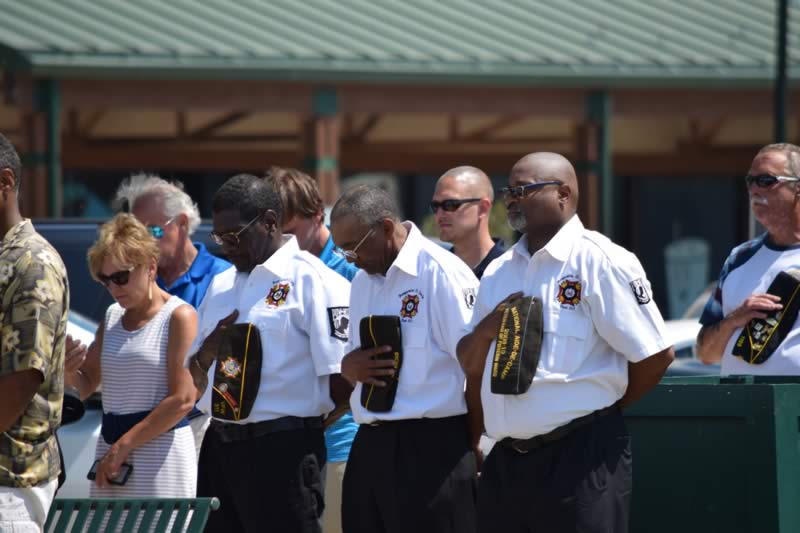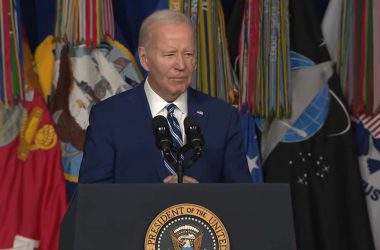WASHINGTON –(ENEWSPF)–April 18, 2016. Today Secretary of Veterans Affairs Robert A. McDonald and Deputy Secretary of Veterans Affairs Sloan D. Gibson updated the Commission on Care laying out the current state of VA and the transformation that is underway to deliver better customer service and results for America’s Veterans.
In laying out the key pieces of the transformation underway – MyVA – Secretary McDonald said, “MyVA is our framework for modernizing our culture, processes, and capabilities – combining functions, simplifying operations, providing Veterans a world-class, customer-focused, Veteran-centered enterprise. I know transformational change is not easy but it is our commitment to the Veterans we serve in order to bring them the customer service and the care and benefits they have earned.”
Secretary McDonald outlined the five MyVA strategies focused on customer-service excellence: improve the Veteran experience, improve the employee experience, improve internal support services, establish a culture of continuous improvement, and expand strategic partnerships. He also provided updates on progress made to date of VA’s 12 breakthrough priorities.
“We have challenges in VA and we own them, but the transformation that Bob talked about is well underway and already delivering measurable results for improving access to care and improving the Veterans experience,” said Deputy Secretary Gibson.
Deputy Secretary Gibson laid out the roadmap for VA to transform from a loose federation of regional systems to a highly integrated enterprise and integrated provider and payer model and presented the following metrics showing that transformation is underway and having positive impact on Veterans care.
- In a nationwide, one-day Access Stand Down VHA staff reviewed the records of more than 80,000 Veterans to get those waiting for urgent care off of wait lists and into clinics. They identified just over 3,300 patients waiting for more than seven days on the Electronic Wait List (EWL) for an appointment in a Level One clinic. By the end of the day, 80 percent were given an appointment immediately, and 83 percent were given an appointment within two-and-a-half weeks.
- Real-time customer-satisfaction feedback collected in our medical centers through VetLink—our kiosk-based software—tells us that about 90 percent of Veterans are either “completely satisfied” or “satisfied” getting the appointment when they wanted it.
- Annual clinical work has increased among VA providers seeing Veterans by almost 18 percent in the last three years; 20 percent when VA and non-VA providers are calculated together.
- With changes already underway to leverage our scale and build a world class end-to-end supply chain, we have already redirected $24 million back towards activities providing better Veteran outcomes.
These results build on the elements of excellence already in place in VA’s health care system that must be maintained and, in many cases, expanded upon.
- According to the American Customer Satisfaction Index, VA has outperformed the private sector in customer service for a decade.
- According to a February article in the Journal of American Medicine, 30-day risk-standardized mortality rates are lower in VA than those of non-VA hospitals for acute myocardial infarction and heart failure.
- The American Journal of Infection Control found that in five years methicillin-resistant Staphylococcus aureus (MRSA) infections declined 69 percent in VA acute care facilities and 81 percent in spinal cord injury units thanks to VA’s aggressive MRSA prevention plan.
- The Independent Assessment found that VA performed the same or significantly better than non-VA providers on 12 of 14 effectiveness measures in the inpatient setting.
- The Independent Assessment also found that VA performed significantly better on 16 outpatient HEDIS measures compared with commercial HMOs and significantly better on 15 outpatient HEDIS measures compared with Medicare HMOs.
- A 2015 study found that VA mental health care was better than private-sector care by at least 30 percent on all seven performance measures, with VA patients with depression more than twice as likely as private-sector patients to get effective long-term treatment.
- Another 2015 study found that outcomes for VA patients compared favorably to patients with non-VA health insurance, with VA patients more likely to receive recommended evidence-based treatment.
Secretary McDonald and Deputy Secretary Gibson were joined by VHA’s Assistant Deputy Under Secretary for Community Care, Dr. Baligh Yehia, who outlined the history and evolution of VA’s partnering with medical providers in the community to include the Department of Defense, Indian Health Service, several academic medical partner hospitals, and a growing number of private sector providers. He outlined the path forward for the Veterans Health Administration to become an integrated payer and provider, much of which depends on a legislative proposal currently working through Congress.
VA offered demonstrations of three management tools showcasing new technology to improve the way Veterans schedule appointments and how VA health care practitioners can see and interact with patient data, all of which improve outcomes for Veterans and take into account feedback from Veterans and employees. This includes a cell phone app currently in development that will allow Veterans to schedule their own appointments as well as a program that has existed in all VA medical centers for a year-and-a-half that allows VA physicians to view a patient record that integrates information from VA, the Department of Defense and community health partners in one screen.
Today’s presentation to the Commission on Care follows a presentation less than a month ago from VA’s Under Secretary for Health, Dr. David Shulkin who laid out actions already underway at the Veterans Health Administration and the vision to move it into the future that embraces an integrated community care model.
Key Resources:
- Readout of Under Secretary for Health Meeting with the Commission on Care on March 23, 2016
- Secretary McDonald addresses suggestions to “shut down VA health care altogether” in a speech to the United Veterans Committee of Colorado last week
- Under Secretary for Health, Dr. David Shulkin’s vision for an integrated payer and provider system in the New England Journal of Medicine: Beyond the VA Crisis — Becoming a High-Performance Network
- The announced launch of MyVA Access outlining systemic improvements and results for Veterans wanting increased access to care
- Secretary McDonald makes the case for the importance of VA health care to American Medicine in the Baltimore Sun
Source: http://www.va.gov
[widget id=”bizy_search_widget-2″]








